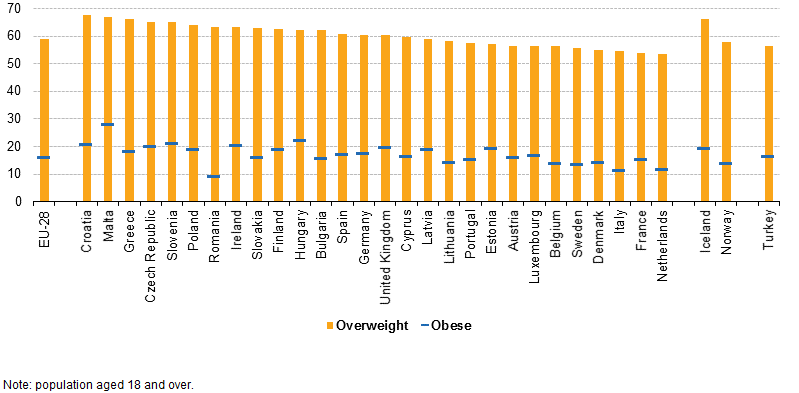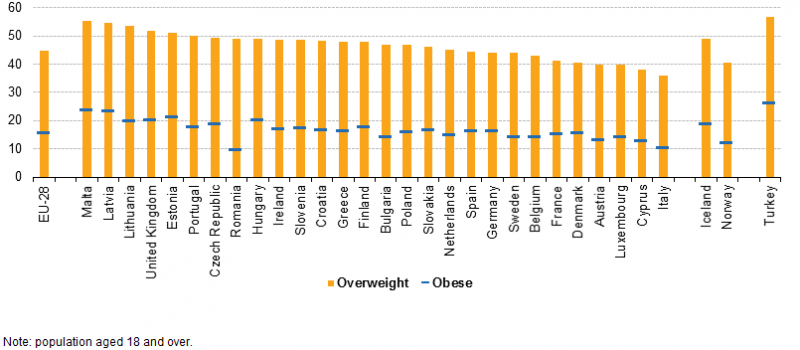According to the World Health Organization (WHO), the worldwide obesity rate has nearly tripled since 1975. 39% of adults aged 18 years and over were overweight in 2016, and 13% were obese worldwide. Photo: Pixabay
Brno, Feb 9 (BD) – Recent domestic health statistics have never shown worse numbers in the country’s history. More than a million Czechs are currently being treated for obesity. According to a 2016 report from the Czech Statistical Office, the average Czech person ate 785.6 kg of food the previous year.
According to a 2016 report by the Institute of Health Information and Statistics (Ústav zdravotnických informací a statistiky, ÚZIS), over one million people are overweight in the Czech Republic. The health statistics have never shown worse numbers in the country’s history, Czech daily Denik.cz reported on Feb. 6, 2018.
South Moravia, however, is not as obese as other regions in the Czech Republic. In 2016, they were the fourth least obese among Czech provinces. On a per capita basis, the worst situation is in Ústí nad Labem and Zlín. In the South of Moravia, over 100,000 people are obese, Brnensky Denik reported.
Among EU nations (EU28), the Czech Republic had the fourth highest proportion of overweight people in 2014, topped only by the Greeks, Croats, and Maltese.
A proportion of overweight and obese men among EU countries. Source: EUROSTAT survey 2014

A proportion of overweight and obese women among EU countries. Source: EUROSTAT survey 2014
“Obesity Update 2017”, released by OECD, ranks the Czech Republic just below the OECD countries average (see the list of OECD countries). OECD reports that 21% of the Czech population is obese, whereas the OECD countries average is 19.5%. The smallest number of obese people in OECD countries was reported in Japan (3.7%) and South Korea (5.3%). At the other end of the spectrum, the highest proportion of obese among OECD countries lives in the USA (38.2%) and Mexico (32.4%).
In the future, obesity levels among OECD countries are expected to be particularly high in the United States, Mexico, and England, where 47%, 39% and 35% of the population respectively are projected to be obese in 2030. The increase is expected to be lowest in Italy and Korea, with obesity rates projected to be 13% and 9% in 2030, respectively.









